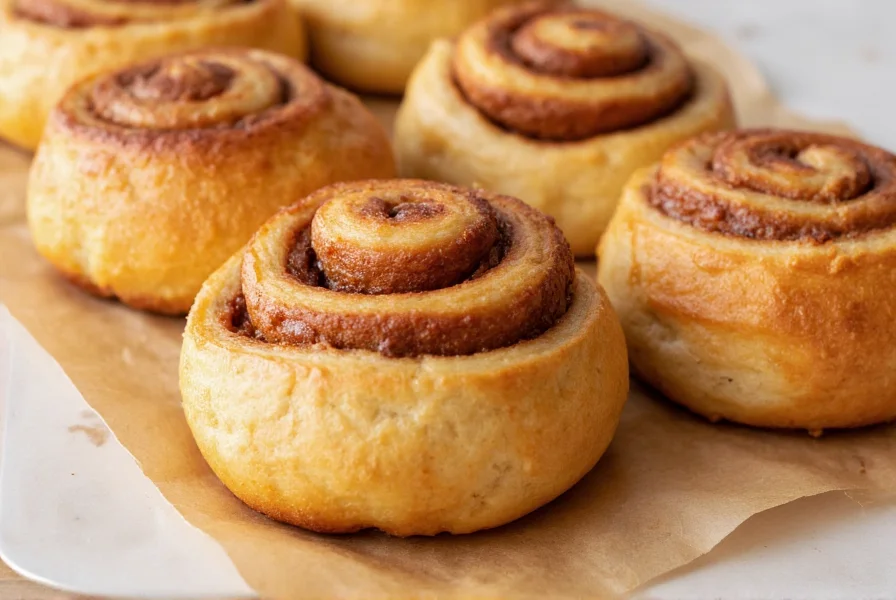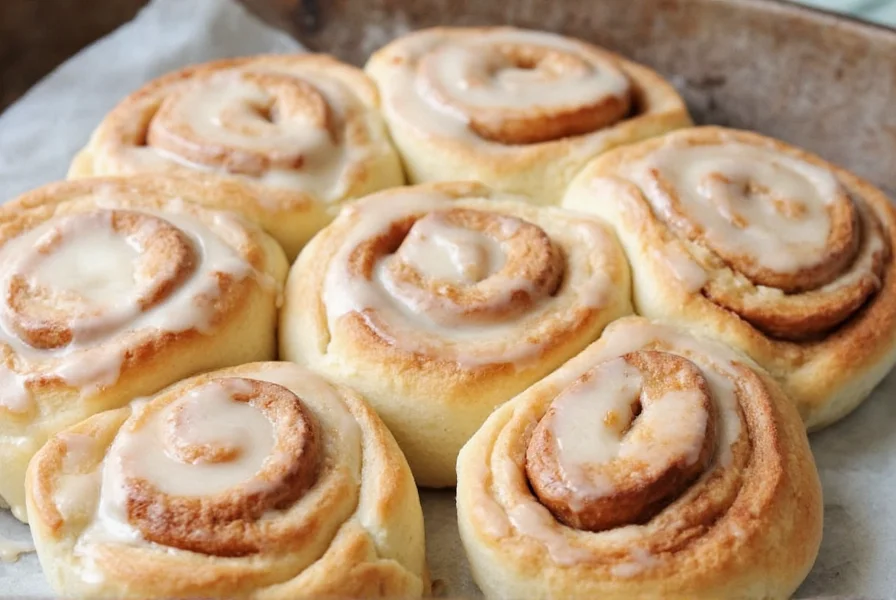The Science Behind Buttermilk's Magic in Cinnamon Rolls
Understanding why buttermilk transforms ordinary cinnamon rolls requires examining its unique chemical properties. Unlike regular milk, cultured buttermilk contains lactic acid with a pH of approximately 4.5, creating ideal conditions for several beneficial reactions:
- Gluten modification: The acid gently breaks down gluten networks, yielding a more tender crumb without compromising structure
- Leavening enhancement: When combined with baking soda, buttermilk produces immediate carbon dioxide for extra lift
- Flavor development: Lactic acid creates subtle tang that balances sweetness and enhances overall complexity
- Moisture retention: Buttermilk's proteins form stronger bonds with flour, preventing staling
Food science research confirms that buttermilk's combination of acidity and protein structure outperforms both regular milk and sour cream in enriched yeast doughs. The optimal ratio is 1 cup buttermilk per 3 cups flour in cinnamon roll recipes.
Essential Ingredients and Their Critical Roles
Creating perfect buttermilk cinnamon rolls requires understanding each component's function. This isn't just another easy buttermilk cinnamon rolls recipe—it's a carefully balanced system where each ingredient serves multiple purposes.
| Ingredient | Primary Function | Professional Tip |
|---|---|---|
| Cultured Buttermilk | Acid tenderizer, moisture retainer, flavor enhancer | Use full-fat, shake well before measuring |
| Bread Flour | Provides optimal gluten structure | Substitute 25% cake flour for extra tenderness |
| Unsalted Butter | Flakiness, flavor carrier, dough lubricant | Use European-style (82% fat) for richer flavor |
| Dark Brown Sugar | Moisture retention, complex caramel notes | Pack firmly for consistent filling texture |
Step-by-Step Preparation Guide for Perfect Results
Follow these professional techniques for homemade buttermilk cinnamon rolls from scratch that rival bakery quality. Temperature control proves critical at every stage.
Dough Development Process
- Warm buttermilk to 100-110°F (38-43°C)—too hot kills yeast, too cold slows fermentation
- Mix wet ingredients thoroughly before incorporating dry components
- Knead to windowpane stage (5-7 minutes in stand mixer)—dough should stretch thin without tearing
- First rise at 75°F (24°C) for 60-90 minutes until doubled—avoid warm spots that cause uneven fermentation
Filling and Shaping Secrets
The difference between mediocre and exceptional soft buttermilk cinnamon rolls often lies in the filling application:
- Roll dough to uniform 16x12 inch rectangle—use bench scraper for clean edges
- Spread softened butter evenly, leaving ½ inch border to prevent leakage
- Mix cinnamon filling with cornstarch (1 tsp per cup sugar) to absorb moisture and prevent sogginess
- Roll tightly from long side, pinch seam closed, and use dental floss for clean cuts

Troubleshooting Common Buttermilk Cinnamon Roll Problems
Even experienced bakers encounter issues with buttermilk vs regular milk in cinnamon rolls. Here's how to solve frequent problems:
Dense or Tough Rolls
Cause: Overworked dough or incorrect buttermilk temperature
Solution: Chill dough 15 minutes before rolling if too elastic; verify buttermilk is 100-110°F before mixing with yeast
Fillings Leaking During Baking
Cause: Uneven filling distribution or insufficient border
Solution: Leave ½ inch border when spreading filling; chill cut rolls 20 minutes before baking to set butter
Rolls Drying Out Quickly
Cause: Inadequate fat content or improper storage
Solution: Increase butter in dough by 15%; store cooled rolls in airtight container with slice of bread to maintain moisture

Advanced Techniques for Bakery-Quality Results
Elevate your best buttermilk cinnamon rolls recipe with these professional methods:
- Overnight retardation: Refrigerate shaped rolls for 12-18 hours—develops complex flavor and ensures even rising
- Steam injection: Place water-filled pan on oven floor during first 5 minutes of baking for superior oven spring
- Temperature monitoring: Remove rolls at exactly 190°F internal temperature to prevent overbaking
- Glaze science: Use confectioners' sugar with 1-2 tsp corn syrup to prevent crystallization
Storage and Reheating Methods That Preserve Freshness
Proper handling maintains the delicate texture of buttermilk cinnamon rolls baking tips perfection:
- Room temperature: Store in airtight container with paper towel for 2 days
- Refrigeration: Wrap individually in plastic, then foil—keeps 5 days
- Freezing: Flash freeze shaped rolls before wrapping for best results when baking from frozen
- Reheating: 10-15 seconds in microwave followed by 2 minutes in 350°F oven restores freshness
Variations for Different Dietary Preferences
Adapt this versatile buttermilk cinnamon rolls recipe while maintaining structural integrity:
- Gluten-free: Substitute 40% tapioca starch in gluten-free flour blend; add 1 tsp xanthan gum
- Dairy-free: Use cultured coconut milk with 1 tsp lemon juice; increase baking powder by ¼ tsp
- Lower sugar: Replace 30% sugar with date paste; add 2 tsp vanilla to compensate for reduced sweetness
Frequently Asked Questions
Can I substitute regular milk for buttermilk in cinnamon rolls?
While possible, regular milk won't provide the same texture or flavor benefits. For closest results, add 1 tablespoon lemon juice or vinegar per cup of milk and let it sit 5 minutes before using. However, the resulting rolls will be less tender and lack the characteristic tang that balances the sweetness.
Why did my buttermilk cinnamon rolls turn out dense?
Dense rolls typically result from one of three issues: buttermilk temperature was too hot (killing yeast), insufficient kneading (underdeveloped gluten), or over-proofing (collapsed air bubbles). Verify your buttermilk is between 100-110°F before mixing with yeast, knead until windowpane stage, and don't let shaped rolls rise more than doubled in size.
How do I prevent the filling from leaking out during baking?
Prevent filling leakage by leaving a ½ inch border when spreading, chilling cut rolls for 20 minutes before baking, and incorporating 1 teaspoon cornstarch per cup of sugar in your filling mixture. The cornstarch absorbs excess moisture while the chilling sets the butter, preventing it from melting too quickly in the oven.
Can I prepare buttermilk cinnamon rolls ahead of time?
Yes, the overnight method produces superior results. Assemble rolls in baking dish, cover tightly, and refrigerate for 12-18 hours. Remove from refrigerator 30 minutes before baking to take the chill off. This slow fermentation develops more complex flavors and ensures even rising when baked.











 浙公网安备
33010002000092号
浙公网安备
33010002000092号 浙B2-20120091-4
浙B2-20120091-4